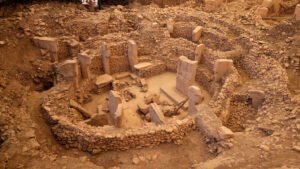For many centuries and although with ups and downs, the theater has been one of the great entertainments for its population, as well as a place for meeting and socializing. Today, this is still the case, with large theaters and modern venues where plays and concerts are performed, or old theaters that are decked out from time to time to serve as an incomparable setting for festivals and other performances. And in cases where only a few ruins remain, they are maintained as archaeological sites worth visiting. In the destinations where Mandala Tours works, there are theaters worth visiting, and here are some examples.
Ancient theaters, archaeological monuments
During Antiquity, theater experienced one of its high points. And proof of this are the large enclosures that have come down to us, in many of our destinations. It was in Greece where its version as a “dramatic art” emerged, and its venues took advantage of the slope of a mountain to establish their stands.
Some of the most spectacular are in Turkey, as the Aegean coast was fully integrated into the ‘world of Ancient Greece’, sharing the same culture and even language. One of the most spectacular, due to its location, is in the Acropolis of Pergamon (Turkey).
The natural ‘heirs’ of the Greeks were the Romans. Romanswho expanded their empire throughout the Mediterranean. And some of the most spectacular ancient theaters you can visit in Turkey with Mandala Tours are precisely from that era. The two of Ephesus stand out: the enormous Great Theater and the Odeon, a sign that this was one of the largest cities of antiquity. And the theater of Hierapolis is equally remarkable for the beauty of its scenery, with a beautiful backdrop of columns and sculptures.
In Jordan we find equally beautiful examples. One of the most outstanding is the Theater of Amman, the capital, being this one of its great tourist attractions. For this reason and because of its good state of preservation, it is a regular venue for events in the capital, such as fairs and concerts.
In Jerash, the theater, or rather, its theaters (as Ephesus has two) are also places of reference for the city and its cultural festival, held in summer with concerts, poetry recitals and, of course, plays.
But one of the best surprises for the traveler is the Theater of Petra, as it was built neither by the Greeks nor the Romans, but by the Nabataeans, a civilization that forged an empire thanks to its strategic commercial and logistical position. Its theater, masterfully excavated in the rock (like the rest of the city) is an unbeatable example of the degree of cultural refinement reached by that society.
Modern and contemporary theaters
In medieval times, theater underwent great changes, becoming a rather street and itinerant expression. And in modern times it began to evolve, diversifying into different genres, which also led to the creation of specific spaces for each of them.
On the subject at hand, it is interesting to highlight the musical opera: although it is a genre originally Italian, it spread all over the world, especially in the 19th century. At that time, Cairo and Egypt in general experienced a boom, thanks mainly to major projects such as the Suez Canal. And good proof of this is that the world premiere of Verdi’s Aida took place at the Khedive Theater in the Egyptian capital, as it was in fact commissioned by Ismail Pasha and is set in Memphis and Thebes. Unfortunately, that theater burned down just a century later, in 1971, so now its baton has been picked up by the Opera House, on the island of Gezira.
Finally, we can mention another very different project, in this case in Morocco: the Grand Theater of Rabat, the work of the famous Anglo-Iraqi architect Zaha Hadid, whose futuristic and innovative design promises to revolutionize the country’s capital, bringing it to the forefront in terms of architecture.





